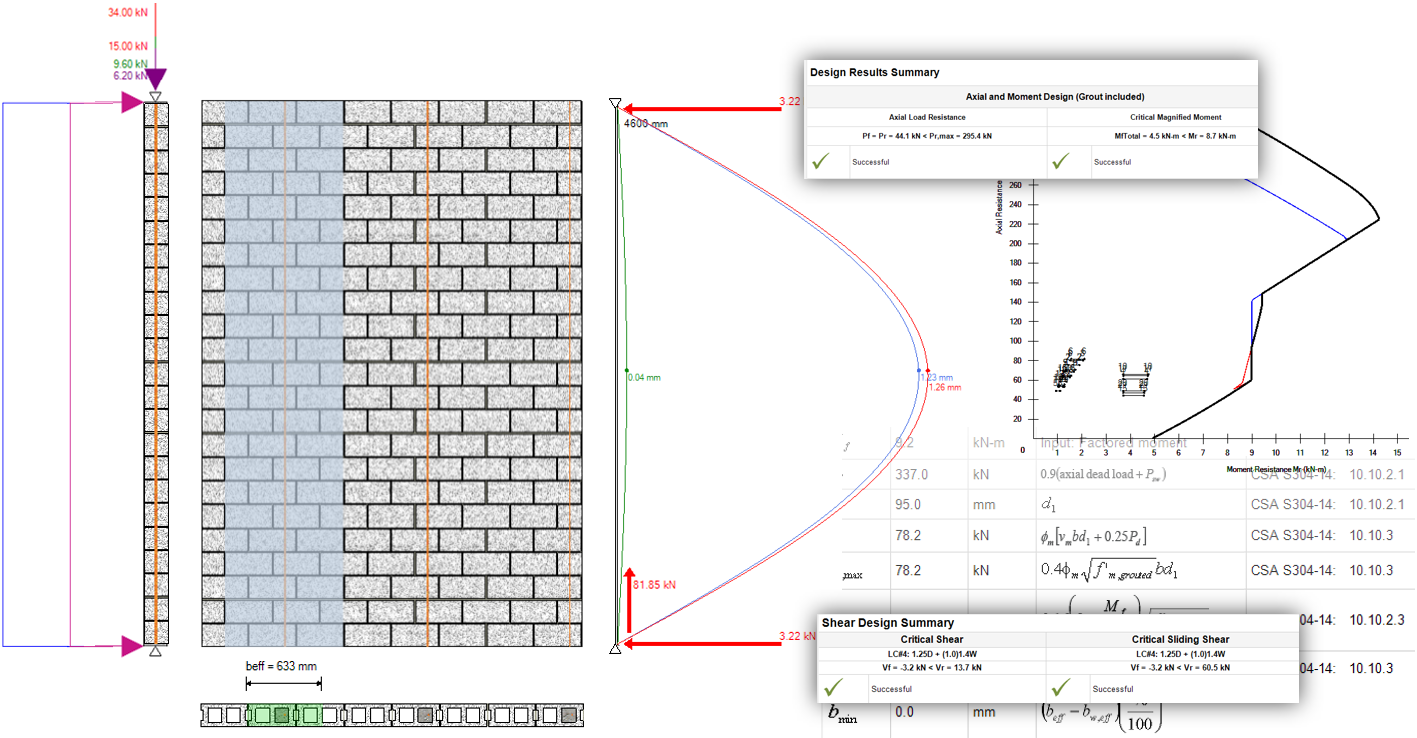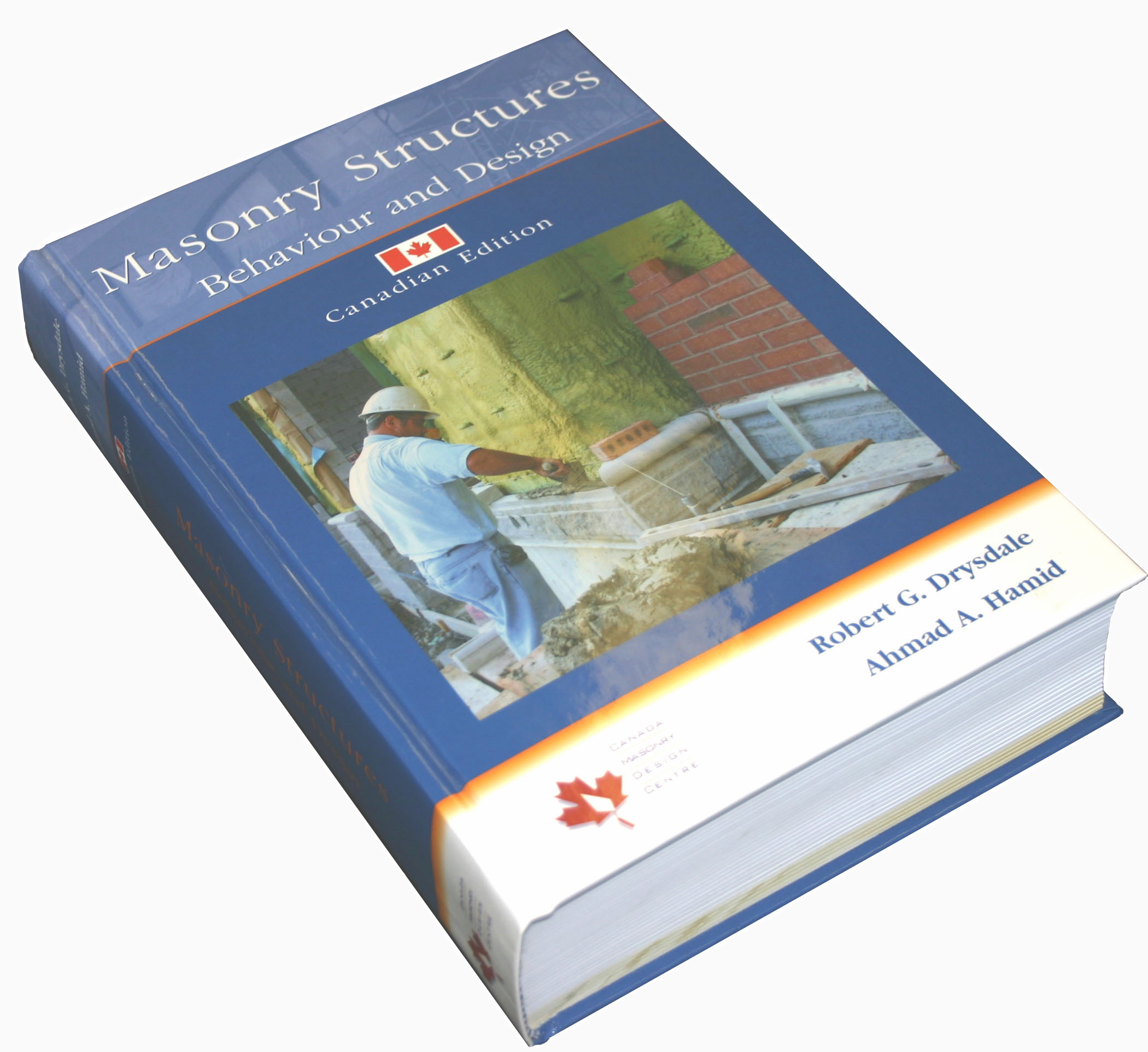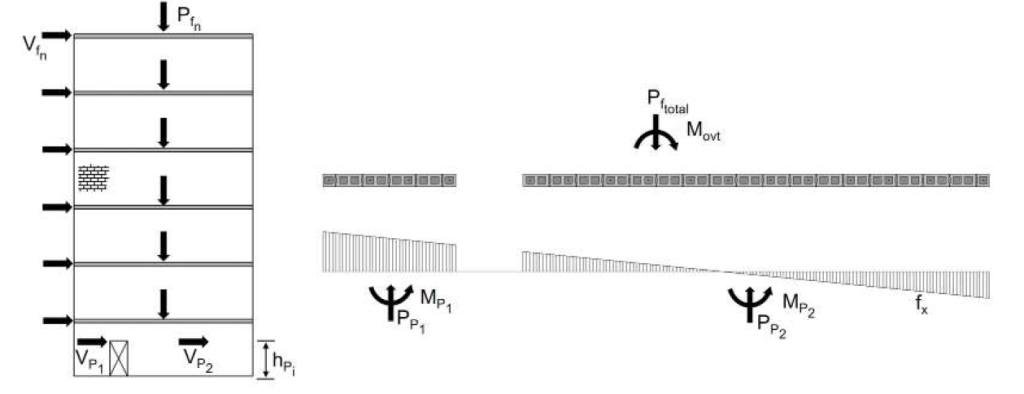Getting you the information and support you need
Get Direct Technical Assistance from Structural Engineers who know Masonry
Have a technical question about masonry materials, design, or construction?
CMDC consists of a qualified team of engineers offering comprehensive technical support to the design community. Masonry contractors who are members of CMDC are also able to contact us with technical questions or concerns, saving them valuable time that would otherwise be wasted as they search for the information they need.
We offer technical assistance related to the design of masonry for both structural and nonstructural applications, codes and standards assistance, detailing of masonry, best practice techniques and access to state-of-the-art research results. When required, CMDC has attended many site visits regarding issues with as-built and ongoing masonry projects.

Design structural masonry in seconds!
Design Software
Use MASS to quantify the performance of loadbearing masonry
MASS is a design software package that designs masonry in accordance with the National Building Code of Canada, as well as CSA S304: Design of masonry structures.
It is available through the MASS website linked below and is financially supported by our members to continue to support development and access to the designer community.

Engineering Textbook – Published by CMDC
Masonry Structures: Behaviour and Design

Our engineering textbook provides a comprehensive background on masonry materials, design, and construction practices. The textbook also contains several design examples and serves as an extension of CMDC technical support for the design community. This is the second edition of the book released for Canadian designers of masonry. There have been many changes from the first edition to create added value for those seeking masonry design resources and who may already have a copy of the first edition of the book.
Aside from updating materials from a technical perspective to address changes made in CSA S304 from the 2004 to 2014 editions, chapters have largely been re-ordered, re-written, and overall appear substantially different from the first edition. An attempt has been made to refocus much of the content on current design practices and better align things with other resources CMDC provides (e.g., the MASS design software and our educational courses or seminars). Since the first edition, CMDC has fielded many different technical calls and received extensive input from the design community as well as from university instructors. We have made every attempt to build on the incredible work from the first version and to provide an improved product for everyone to hopefully give value to the new users of the book as well as those who are experienced with the first edition.
Chapter 8 of the textbook provides detailed insight into seismic design for multi-storey masonry structures in buildings, emphasizing the importance of considering seismic factors. Chapter 12 covers construction-related aspects such as workmanship, weather effects, flashing installation, movement joints, inspection, and quality control. Familiarity with construction methods is crucial for effective mason work. Chapter 13 discusses common design challenges, including new analysis techniques for wind loads and overcoming height-to-thickness limits in shear walls. Designing for post-disaster importance categories requires special attention, particularly for specific details like partial grouting, horizontal bending walls, and fixed-based out-of-plane bending conditions. Design complexity versus cost is a trade-off, and the presented solution serves as an illustrative example rather than an optimization, cautioning designers to consider the relevant discussion.
The textbook includes comprehensive design examples covering various topics, including In-plane flexural Resistance of a Multi-Storey Shear Wall with an Asymmetric Flanged Cross-Section, Design forces on Piers in a Multi-Storey Shear Wall with an Opening at its Base and Seismic Analysis of a Multi-Storey Structure.
Overall, the textbook provides a foundation for understanding the behaviour in multi-storey masonry buildings, with a particular focus on seismic considerations.


More information can be found here:
Loadbearing Crash Course
An Engineering Crash Course in Loadbearing Design
Many engineers who have worked with masonry in the past might have only used it as a partition or veneer, as opposed to the primary loadbearing structural material. While it used to be taught universally in university engineering programs, only a handful of schools currently include it in their undergraduate curriculum.
As a result, CMDC has offered an equivalent undergraduate level design course, the Engineered Masonry Design Course (EMDC) to supplement a designers existing knowledge related to reinforced concrete and apply those principles to modern masonry design.
Below is a recording of the mini-course that was run by CMDC to kick off the 14th Canadian Masonry Symposium in May of 2021.
This course will focus on the technical challenges to designing multi-storey masonry structures within the context of the 2014 Edition of the CSA S304 design standard and the 2015 National Building Code of Canada.
It is not meant to be exhaustive and is geared towards engineers who are already familiar with the basic principles of masonry design. It’s not meant to get overly technical or show many example calculations as it’s aim is to provide a higher level overview of the design philosophy and assumptions an engineer would employ on a multi-storey loadbearing masonry structure.
Jump straight to:
Wall Layouts (14:24) Modeling (26:35) Loads and Sizing (42:20) Typical Details (52:22) Specification Issues (1:04:14) Specifying a new f’m (1:20:04) Software for Loadbearing Masonry (1:26:27) Masonry Shear Wall Design (1:46:22) Conventional Construction (1:57:31) Software for Multi-Storey Design (2:13:01)
Other Helpful Resources
Compiling a catalog of references to round out your masonry knowledge
CMDC often refers design professionals to other technical content made available by other organizations across the world. More frequently, there are clauses within our own Canadian codes and standards that address many of the common questions or concerns in the design or construction process.
Relevant Codes and Standards
CMDC is available to discuss codes and clause interpretations from within any of the masonry-related CSA Standards. We also sit on several relevant technical committees as part of our involvement to support the industry.
CSA S304-14: Design of Masonry Structures
This Standard specifies requirements for the structural design of unreinforced, reinforced, and prefabricated masonry structures and components in accordance with the limit states design method of the National Building Code of Canada.
CSA A371-14: Masonry Construction
This standard is prescriptive and primarily targets masonry contractors. It outlines the minimum requirements for both masonry materials and the construction process.
CSA A82-14: Clay Brick Standard
This Standard applies to brick made from fired clay or shale that are intended for use as structural and/or facing components in masonry. It includes testing and other requirements pertaining to freeze-thaw durability, finish, texture, colour, compressive strength, absorption, efflorescence, size, warpage, and out-of-square.
CSA A165.1-14: Concrete Block Standard
This Standard applies to concrete block masonry units made from cementitious materials, water, and aggregates, with or without the inclusion of other materials. This Standard may be applied to other units of similar manufacture and size within the limitations of the Standard.
CSA A179-14: Mortar and Grout Standard
This Standard specifies requirements for mortar for use in bedding, jointing, and bonding of masonry units; and grout for use in filling core, cell, or cavity space in unit masonry construction.
CSA A370-14: Connectors Standard
This Standard sets forth minimum design requirements for a range of masonry connectors such as ties, anchors, fasteners, and repair connectors. It explicitly excludes connectors related to precast concrete, prefabricated masonry panels, and fasteners used for equipment or fixtures.
Canadian Manufacturer Association Resources:
Canadian Concrete Masonry Producers Association (CCMPA)
Metric Technical Manual and Seismic Design Guide: CCMPA has published a seismic technical design guide that is available as a complimentary resource on its website. It also includes helpful design examples.
Clay Brick Association of Canada (CBAC)
Many helpful Tech notes are available on their website. Click here to see the full directory
International Industry Resources
National Concrete Masonry Association (NCMA)
U.S. block manufacturers have some details and tech notes that can also apply to Canada.
Brick Industry Association (BIA)
U.S. association of distributors and manufacturers of clay brick. BIA offers free brick masonry technical notes about design, detailing, and construction.
The Masonry Society (TMS)
U.S. educational, scientific, and technical society dedicated to the advancement of scientific, engineering, architectural, and construction knowledge of masonry.
The International Masonry Institute (IMI)
Partnership between members of the International Union of Bricklayers and Allied Craftworkers (BAC) and the contractors. IMI provides training and several educational and design tools.
Still haven’t found what you’re looking for?
CMDC often refers design professionals to other technical content made available by other organizations across the world. We also host the Canadian Masonry Symposiums where cutting-edge research is presented from all over the world and made available here on our website. Through your contact with us, let us help point you to the answers you are looking for.
Get in touch with our team
The Canada Masonry Design Centre helps members of the design community across the country by connecting them to the resources and supports they need. Contact us today and get the conversation started!
Contact Us

